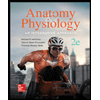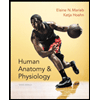Now, based on the lecture, explain the process of counter current exchange mechanism as established by the vasa recta. Pay attention to where in the vasa recta salt enters and salt leaves. Also pay attention to where water enters and leaves. What is established in the process? Copyight o Mcoran Edscaton Permisin regired fer mprodacion or daginy Blood flow Renal cortex Capillary- Tissue fluid 300 475 Outer renal medulla 350 425 625 575 eo- 775 725 925 Inner renal 875 ooo. 1,075 medulla 1.025 1,200 - Difusion of NaCl and urea Osmosis of water
Now, based on the lecture, explain the process of counter current exchange mechanism as established by the vasa recta. Pay attention to where in the vasa recta salt enters and salt leaves. Also pay attention to where water enters and leaves. What is established in the process? Copyight o Mcoran Edscaton Permisin regired fer mprodacion or daginy Blood flow Renal cortex Capillary- Tissue fluid 300 475 Outer renal medulla 350 425 625 575 eo- 775 725 925 Inner renal 875 ooo. 1,075 medulla 1.025 1,200 - Difusion of NaCl and urea Osmosis of water
Human Anatomy & Physiology (11th Edition)
11th Edition
ISBN:9780134580999
Author:Elaine N. Marieb, Katja N. Hoehn
Publisher:Elaine N. Marieb, Katja N. Hoehn
Chapter1: The Human Body: An Orientation
Section: Chapter Questions
Problem 1RQ: The correct sequence of levels forming the structural hierarchy is A. (a) organ, organ system,...
Related questions
Question
100%
I struggled with my homeowork. Can you help me, please?

Transcribed Image Text:**Educational Content: Understanding the Counter Current Exchange Mechanism in the Vasa Recta**
---
The diagram illustrates the counter current exchange mechanism established by the vasa recta, essential for maintaining osmotic balance in the kidney. This process ensures effective reabsorption of water and solutes, crucial for bodily fluid regulation.
**Diagram Breakdown:**
- **Structure:**
- The vasa recta is depicted in a U-shape, with blood flow moving downward and then upward through the structure.
- The left side (descending limb) of the U is marked in red, indicating a gradient from lower to higher concentration (300 to 1,200 mOsm/L).
- The right side (ascending limb) is in blue, representing a return to lower concentrations as it ascends.
- **Processes:**
- On the descending limb, the concentration increases due to the diffusion of NaCl and urea into the capillary, shown by solid arrows pointing into the limb.
- On the ascending limb, the concentration decreases as salts leave the capillary back into the tissue fluid, depicted by solid arrows pointing outward.
- Water movement via osmosis is illustrated by dashed arrows, with water entering the descending limb and leaving the ascending limb.
- **Concentration Zones:**
- The diagram marks the transition from the renal cortex (outermost) through to the outer and inner renal medulla. Concentrations rise as the vasa recta descends into the medulla (1,200 mOsm/L) and fall as it ascends back toward the cortex (300 mOsm/L).
**Key Concepts:**
- **Counter Current Exchange:**
- Ensures that the blood in the vasa recta maintains a similar osmolarity to the surrounding interstitial fluid, preventing washout of the medullary solute gradient.
- The system facilitates the conservation of water and maintains the high solute concentration in the medulla required for urine concentration.
This physiological process is vital for the kidney's ability to concentrate urine and maintain overall fluid homeostasis in the body. Understanding these mechanisms provides insight into how kidneys efficiently manage water and electrolyte balance.
---
Diagram Key:
- **Solid Arrows:** Diffusion of NaCl and urea.
- **Dashed Arrows:** Osmosis of water.
Expert Solution
This question has been solved!
Explore an expertly crafted, step-by-step solution for a thorough understanding of key concepts.
This is a popular solution!
Trending now
This is a popular solution!
Step by step
Solved in 2 steps

Recommended textbooks for you

Human Anatomy & Physiology (11th Edition)
Anatomy and Physiology
ISBN:
9780134580999
Author:
Elaine N. Marieb, Katja N. Hoehn
Publisher:
PEARSON

Anatomy & Physiology
Anatomy and Physiology
ISBN:
9781259398629
Author:
McKinley, Michael P., O'loughlin, Valerie Dean, Bidle, Theresa Stouter
Publisher:
Mcgraw Hill Education,

Human Anatomy
Anatomy and Physiology
ISBN:
9780135168059
Author:
Marieb, Elaine Nicpon, Brady, Patricia, Mallatt, Jon
Publisher:
Pearson Education, Inc.,

Human Anatomy & Physiology (11th Edition)
Anatomy and Physiology
ISBN:
9780134580999
Author:
Elaine N. Marieb, Katja N. Hoehn
Publisher:
PEARSON

Anatomy & Physiology
Anatomy and Physiology
ISBN:
9781259398629
Author:
McKinley, Michael P., O'loughlin, Valerie Dean, Bidle, Theresa Stouter
Publisher:
Mcgraw Hill Education,

Human Anatomy
Anatomy and Physiology
ISBN:
9780135168059
Author:
Marieb, Elaine Nicpon, Brady, Patricia, Mallatt, Jon
Publisher:
Pearson Education, Inc.,

Anatomy & Physiology: An Integrative Approach
Anatomy and Physiology
ISBN:
9780078024283
Author:
Michael McKinley Dr., Valerie O'Loughlin, Theresa Bidle
Publisher:
McGraw-Hill Education

Human Anatomy & Physiology (Marieb, Human Anatomy…
Anatomy and Physiology
ISBN:
9780321927040
Author:
Elaine N. Marieb, Katja Hoehn
Publisher:
PEARSON